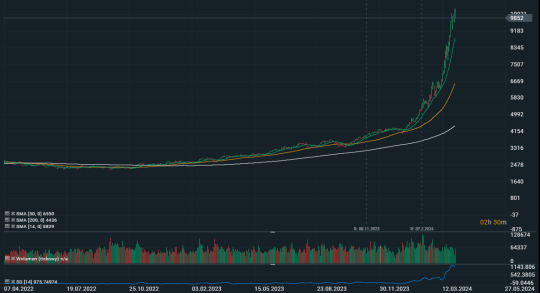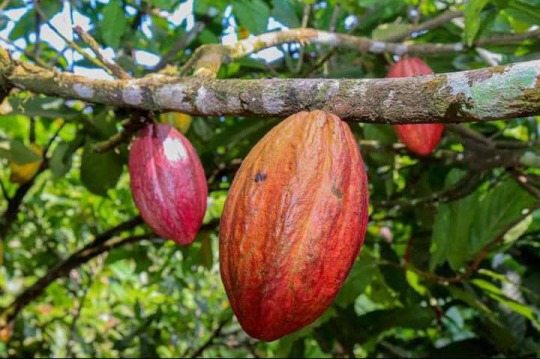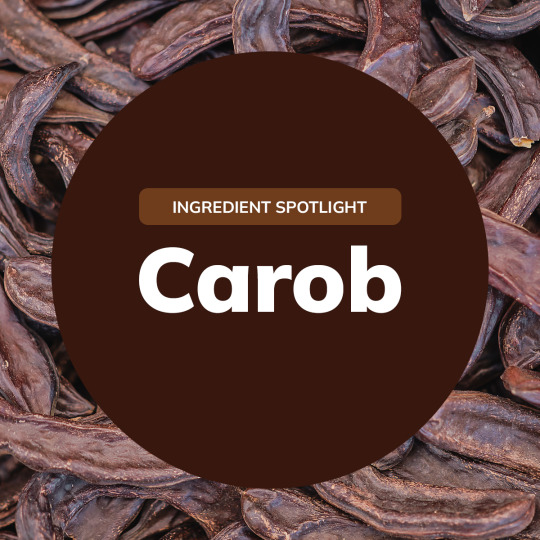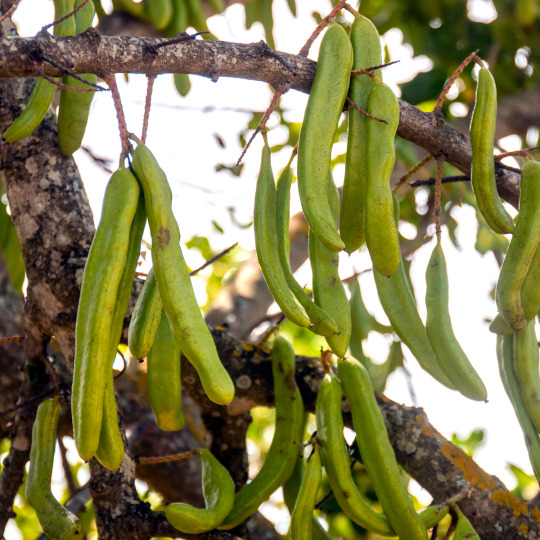#Cocoa Market
Explore tagged Tumblr posts
Text
The cocoa and chocolate industry encompasses the cultivation, processing, manufacturing, and distribution of cocoa beans and chocolate products. It's a global industry worth billions of dollars, with key players located in various regions around the world. With growing awareness about health, an increasing number of consumers are prioritizing their health and following specific diets with specific needs.
#Cocoa and Chocolate Market#Cocoa and Chocolate#Cocoa and Chocolate Market Size#Cocoa and Chocolate Market Share#Cocoa and Chocolate Market Growth#Cocoa and Chocolate Market Trends#Cocoa and Chocolate Market Forecast#Cocoa and Chocolate Market Analysis#Cocoa and Chocolate Market Report#Cocoa and Chocolate Market Scope#Cocoa and Chocolate Market Overview#Cocoa and Chocolate Market Outlook#Cocoa and Chocolate Market Drivers#Cocoa and Chocolate Industry#Cocoa Market#Chocolate Market
0 notes
Text
Cocoa Chronicles: Unveiling the Global Market Trends and Decadent Delights
Market Overview: According to the DataM market research report, the global cocoa market US$ 12,478 million in 2022 and is projected to witness lucrative growth by reaching up to US$ 180,18 million by 2030. The market is expected to exhibit a CAGR of 4.7% during the forecast period (2023-2030). Cocoa is the key ingredient in chocolate and chocolate confections. The primary distinction between cocoa and chocolate is that cocoa is a powder substance that contains no or little cocoa butter and is, therefore, healthy. The demand for cocoa and chocolate is increasing due to the growing popularity of chocolate products and the expansion of the food and beverage industry. Cocoa liquor, cocoa butter, and cocoa powder are commercially available cocoa products, but chocolate products are available in chocolate filled with dark white milk. This industry trend is expected to fuel demand for cocoa and chocolate shortly.
Market Drivers: The demand for confectionery products is a significant growth driver for the cocoa market. According to the International Cocoa Organization (ICCO), between 2010 and 2020, the global demand for cocoa beans increased by an average of 2.5% per year, propelled primarily by the demand for chocolate confectionery. The chocolate confectionery market is anticipated to increase over the next few years. According to the National Confectioners Association, premium chocolate sales increased by 12.5% in the United States in 2020. This data is based on how the demand for confections will influence the cacao market.
Market Restraints: Climate change poses risks to cocoa production. Rising temperatures, unpredictable rainfall patterns, and increased incidence of pests and diseases can affect cocoa yields and quality. Climate- related events such as droughts and floods can disrupt cocoa farming and impact supply. Adapting to climate change and implementing sustainable agricultural practices are crucial challenges for cocoa producers.
Market Opportunities: Increasing consumer awareness and demand for sustainably and ethically sourced products present opportunities for the cocoa market. Implementing responsible sourcing practices, supporting fair trade initiatives, and promoting transparency in the supply chain can help meet consumer expectations and differentiate cocoa products in the market. For more details on this report - Request for Sample
COVID-19 Impact Analysis: The COVID-19 outbreak has caused market disruption. The global pandemic, as well as the associated lockdowns and other restrictions, had an impact on consumer purchasing power in 2020. According to a report published in October 2020 by the National Confectioners Association, seasonal demand for confectionery in the United States has decreased as a result of the pandemic. Because chocolate confectioneries are frequently consumed outside of the home or while traveling, sales of these items initially fell in 2020. The outbreak of the COVID-19 pandemic has caused a sudden drop in chocolate production and sales. Recent Developments in the Industry: In May 2022, Bloomer Chocolate Company and DouxMatok collaborated to launch the new chocolate and confectionery coatings. In March 2020, Mars, Incorporated, a world leader in confectionery brands, announced a new sustainability-inspired chocolate experience, CO2COA, is joining the family of snacks and treats that includes M&M'S, SNICKERS, SKITTLES, and EXTRA Gum. In September 2021, Lindt & Sprungli Group announced the integration of Caffarel S.p.A to make Lindt & Sprüngli S.p.A. The operation aims to increase the synergies between the two organizations while keeping their different local identities and strong business and industrial strategies.
Market Segmentation: As per the research analysis, the global cocoa market is segmented by type into Dutch-processed, natural; by form into cocoa butter, cocoa liquor, cocoa powder, cocoa beans, and others; by application into cosmetics, pharmaceuticals, food & beverages, confectionery, and others. Based on application, the food & beverages segment holds the largest market share in the cocoa market, driven by the high demand for cocoa-based products in the industry. The chocolate confectionery market is the largest segment of the cocoa market, accounting for the majority of cocoa consumption globally. Cocoa is also used in a range of beverages, including hot chocolate, cocoa-based drinks, and coffee blends. The demand for cocoa-based beverages is growing, with consumers increasingly seeking healthier and more sustainable alternatives to traditional beverages.
Geographical Classification: The global cocoa market is segmented into North America, Europe, South America, Asia Pacific, and Middle East & Africa. North America Cocoa Market: North America holds the largest market share in the cocoa market, driven by the high consumption of cocoa-based products in the region. North America is one of the largest consumers of chocolate globally. The premium chocolate market in North America is also growing, driven by increasing demand for high-quality, artisanal chocolates. According to Statista, the U.S. cocoa market is estimated to be worth 9.67 billion USD. The report also suggests U.S. consumers ate, on average, 10.8 kilograms of chocolate per person during the first year of the pandemic.
Competitive Landscape: The major global players include the Cocoa market Barry Callebaut, PLOT Enterprise Ghana Limited, Cocoa Processing Co. Ltd., Cargill, Inc., BD Associates Ghana Ltd., ECOM Agro-industrial Corporation, Touton S.A., Olam International, Niche Cocoa Industry Ltd., and Fuji Oil Company Ltd.
Additional Benefits Post Purchase:
1) Unlimited Analyst support for a period of 1 year. 2) Any query with regard to the scope offered will be addressed within 24- 48 hours. 3) An Excel sheet with market numbers will be provided separately. The Full Report has the below insights.
The report offers a comprehensive evaluation of the market in terms of market value (US$) and Y-o-Y Growth Rates (%). It does so via in-depth qualitative insights, historical data (2021-2022) and verifiable projections about market size during the forecast period (2023-2030). Visualize the composition of the global cocoa market by type, form, application, and region, highlighting the key commercial assets and players. o By Type: Dutch-Processed, Natural o By Form: Cocoa Butter, Cocoa Liquor, Cocoa Powder, Cocoa Beans, Others. o By Application: Cosmetics, Pharmaceuticals, Food & Beverages, Confectionery, Others. o By Region: North America, South America, Europe, Asia Pacific, Middle East & Africa
Identify commercial opportunities in the global cocoa market by analyzing trends and co-development deals. The report also covers data insights on various industry forces such as Porter's five forces analysis, supply chain analysis, pricing analysis, regulatory analysis. Excel data sheet with thousands of data points of global cocoa market-level 4/5 segmentation. PDF report with the most relevant analysis cogently put together after exhaustive qualitative interviews and in-depth market study. Product mapping in Excel for the key product of all major market players The report will provide access to approximately 61 market data tables, 64 figures and close to 180 pages.
About Us: DataM Intelligence 4Market Research is a Market Research firm that provides end-to-end business solutions to organizations from Research to Consulting. We, at DataM Intelligence, leverage our top trademark trends, insights and developments to emancipate swift and astute solutions to clients like you. We encompass a multitude of Syndicate Reports & Customized Reports with a robust methodology. Our research database features countless statistics and in-depth analyses across a wide range of 6300+ reports in 40+ domains creating business solutions for more than 200+ companies across 50+ countries; catering to the key business research needs that influence the growth trajectory of our vast clientele.
1 note
·
View note
Text
Cocoa Market Forecast 2023-2030: Examining Key Factors Driving Growth in the Global Cocoa Industry

The cocoa market refers to the global industry involved in the production, trade, and consumption of cocoa beans, which are the key raw material for chocolate and various cocoa-based products. Here is some comprehensive information about the cocoa market:
Production of Cocoa:
Cocoa beans are primarily grown in tropical regions within a narrow band of 10 degrees latitude on either side of the equator.
The major cocoa-producing countries include Ivory Coast, Ghana, Indonesia, Nigeria, Cameroon, and Brazil.
Cocoa is cultivated on small farms, often by smallholder farmers, who typically rely on manual labor for planting, harvesting, and processing.
Cocoa Varieties:
There are three main varieties of cocoa beans: Criollo, Forastero, and Trinitario.
Criollo beans are known for their high-quality flavor but are susceptible to diseases and pests.
Forastero beans are the most common variety and are known for their robust flavor and disease resistance.
Trinitario beans are a hybrid of Criollo and Forastero, combining desirable flavor characteristics with greater disease resistance.
Cocoa Processing:
Once harvested, cocoa beans undergo processing to transform them into various cocoa products.
The first step is fermentation, where beans are placed in heaps or containers to undergo microbial fermentation, which develops flavor precursors.
After fermentation, beans are dried to reduce moisture content and prevent spoilage.
The next stage involves roasting the beans to develop their distinct flavors and aroma.
Finally, the roasted beans are ground into a paste called cocoa mass or cocoa liquor, which serves as the basis for further processing.
Cocoa Products:
Cocoa beans and cocoa products are used to manufacture a wide range of products, with chocolate being the most prominent.
Chocolate can be further categorized into dark chocolate, milk chocolate, and white chocolate, each with its own composition and flavor profile.
Other cocoa-based products include cocoa powder, cocoa butter, cocoa nibs, cocoa paste, and cocoa beverages.
Market Trends and Drivers:
The global demand for cocoa and chocolate products continues to grow, driven by factors such as population growth, rising disposable incomes, and increased consumer indulgence.
Health-conscious consumers are also fueling the demand for high-quality dark chocolate, which is perceived to offer health benefits.
Sustainability and ethical sourcing have become significant concerns in the cocoa market, with efforts to address issues like child labor, deforestation, and fair trade practices.
Challenges and Opportunities:
The cocoa industry faces various challenges, including volatile prices, climate change, pests and diseases (such as cocoa swollen shoot virus and black pod disease), and supply chain inefficiencies.
However, there are opportunities for market expansion, such as the growing demand for premium and artisanal chocolate, increasing consumption in emerging markets, and innovations in cocoa processing techniques.
It's important to note that the cocoa market is subject to fluctuations and changes, and the information provided here may not reflect the most up-to-date dynamics. For the latest and more detailed information, it is advisable to consult industry reports, market research, and reputable sources specializing in the cocoa market.
0 notes
Link
0 notes
Text


Circa 1972 American breakfast cereals in a supermarket, from an educational short film.
#cereal#count chocula#frankenberry#alpha-bits#breakfast cereal#1972#1970s#70's#corn flakes#grape nuts#kix#cocoa pebbles#trix#super sugar crisp#grocery store#supermarket#total cereal#lucky charms#fortified oat flakes#fruity pebbles#magical disappearing money#mayfair markets
30 notes
·
View notes
Text

Cryptocurrency chart? Meme-stock? Nope. Thats an chart for price of futures for Cocoa.
Cocoa is produced only in handful of the regions of the world and currently most of them are experiencing crop failures due to climate change.
Chocolate will most likely become significantly more expensive and that might be permanent change. But worry not! 1% who generates over 50% of world's emissions will never run out of chocolate!
39 notes
·
View notes
Text




#World Market#holidays#gifts#hello kitty#hk#sanrio#hot chocolate#hello kitty cotton candy#cotton candy#candy floss#pink#worldmarket#hot cocoa#cocoa
3 notes
·
View notes
Text

Bruh germany really be like:

#german stuff#for context:#at german christmas markets hot cocoa with a shot of rum is quite a common drink that is known under the name 'lumumba'#it is apparently named after a congolese politician from the 50s who played a big role in getting congo to be independent from belgium#(only learned that today btw lol)#and now the city of frankfurt is advocating for the people at their christmas markets selling the stuff to rename the drink#cause apparently the fact that the drink has a shot of rum in it is racist because the politician it is named after got shot 💀#like bruh whenI saw that headline I though it might be sth about cocoa (so a brown drink) being named after a black guy being racist but#this is somehow even more 🤡
4 notes
·
View notes
Text
Cameroon Red Cocoa Inches Closer to Labeling
As OAPI Awaits Coloration Analysis, Cameroon's Red Cocoa Inches Closer to Labeling. #Cocoa #Cameroon #agriculture #GeographicalIndication #OAPI #MarketPotential
As OAPI Awaits Coloration Analysis, Cameroon Red Cocoa Inches Closer to Labeling Cameroon red cocoa, acknowledged as a geographical indication (GI) product in 2019, is advancing towards official labeling by the African Intellectual Property Organization (OAPI). In a recent international symposium on geographical indications in Africa, Michel Gonomy, Head of the Geographical Indications,…

View On WordPress
4 notes
·
View notes
Text

All about carob! 🌲🫘
🟤 The carob tree, a flowering evergreen native to the Mediterranean and the Middle East, grows up to 50 feet tall and produces edible legume fruit pods.
🍫 Carob is typically used as a chocolate substitute in cooking using carob powder/flour, which is made from the dried, roasted, and finely ground carob pods. Compared to chocolate, carob is naturally sweet, does not have any caffeine content, is around 1/3 of the calories, is higher in calcium, is cholesterol free, and has zero fat. Carob on its own is also high in antioxidant content and fiber. Great for people on caffeine-free diets and safe for children! And while not a nutritional choice for animals, it's safe for both dogs and cats to accidentally or moderately eat compared to chocolate.

🚢 Carob requires minimal amounts of rain, is not very labor intensive, does not require post-harvest fermentation, and does not have any issues with child labor human rights violations (unlike chocolate). Per year, 125kg can be harvested from a mature carob tree vs 1.5kg cocoa beans from a mature cocoa tree. We'll discuss more differences between these two in additional posts that cover taste, sustainability, and human rights. (Be sure to follow us)

❓ Did you know? In days gone by, jewelers used the uniform weight of the seeds of the carob tree (200mg) to measure the weight of gold and gems, and called it a "carat." The "carat" takes its name from the Greek word for a carob seed, keration, via the Arabic word, qīrāṭ.

🤔 But what does it taste like? It has its own unique flavor but can be described as tasting like sweetened dark chocolate. It might be a required taste or you might love it the first time you try it!
Have you tasted carob yet? Do you use it in baking often? 🥰
#carob#ingredients#ingredient#food#cooking#information#did you know#trivia#today i learned#interesting#fun facts#amazing facts#factsdaily#factsnfunnypics#chocolate#cocoa#cocoa nibs market#cocoa beans#baking#foodie#food and drink#desserts#dessert
21 notes
·
View notes
Text
I have a fun day planned ahead 😊 some of my muse has returned, so if I'm not too tired in a couple of hours or tonight then I will happily be here! ♥️
#ooc : the mortal#hello dear friends! 👋#I'm gonna get hot cocoa or mulled wine from the christmas market!#I'm so happy I managed to beat insomnia last night you have no idea!!! i finally feel rested!
2 notes
·
View notes
Text
Cocoa and Chocolate Market to Witness Unprecedented Growth in Coming Years
The global cocoa market as per revenue was estimated to be worth $21.1 billion by 2022 and is poised to reach $26.3 billion by 2027, growing at a CAGR of 4.5% from 2022 to 2027. The global chocolate market as per revenue was estimated to be worth $127.9 billion by 2022 and is poised to reach $160.9 billion by 2027, growing at a CAGR of 4.7% from 2022 to 2027. Increasing sales of chocolate confectionery products to be consumed as comfort food is responsible for making it a regular grocery items in households. Chocolate is considered a traditional gift on special occasions and festivals such as Christmas, Easter, Halloween, and Valentine’s Day in American and European countries, a trend which is now adopted in some Asian countries such as India, China, and Japan.

Download PDF Brochure: https://www.marketsandmarkets.com/pdfdownloadNew.asp?id=226179290
Health Benefits of Chocolates
Chocolates have a long history of being used as a health food. In the 18th century, a chocolaty drink was used in England to prevent and cure stomach aches. Today, ORAC (Oxygen Radical Absorbance Capacity) is used to compare the antioxidant capacity of different foods. Chocolates, along with apples and blueberries, are considered to be one of the best ORAC rating foods. Instead of relying on medication, consumers prefer to incorporate ingredients that improve their health into their normal diet. Dark chocolate is becoming more popular among consumers due to its high cocoa content and flavonoids, especially a subtype known as flavanols that is linked to a lower risk of heart disease. Additionally, those who consume dark chocolate or high cocoa content have a lower chance of developing insulin resistance and high blood pressure. Thus, the health benefits associated with cocoa and its products are the biggest driver for the cocoa and chocolate market.
Seasonal and Festive-related Sales
Chocolate is considered a traditional gift on special occasions and festivals such as Christmas, Easter, Halloween, and Valentine’s Day in American and European countries, a trend which is now adopted in some Asian countries such as India, China, and Japan. Chocolate sales shoot up during festive seasons. Keeping this seasonal effect of sales in mind, companies trying to venture into developing economies, such as India and China, are focusing on specialty products for traditional festivals such as the Chinese New Year, Raksha Bandhan, and Diwali in India. Currently, the seasonal and festive sales of chocolate products highly impact the market as a large portion of chocolate products are consumed in this segment. Depending on the situation, they are produced in a variety of shapes, sizes, colors, and product materials. Thus, this high demand for chocolates and its products during festivals would enhance the market for cocoa and chocolate.
Large Number of Applications
Chocolate is used in several applications, including confectionery, beverages, and baking. Chocolate is setting its foot rapidly in the baking industry, with lots of chocolates being looked upon as a flavor for biscuits, cakes, and pastries. In the global flavor industry, several new product types are being developed, such as energy drinks, yogurt, and dairy beverages. Additionally, chocolate liquor is generally used for applications in the production of bittersweet chocolate and baking applications. Cocoa is used in the pharmaceutical industry for providing the chocolate essence or flavour to the drugs to improve the palatability or compliance of the dosage forms for consumers. In addition to that, natural cocoa butter is frequently used in cosmetics as a humectant, a lubricant to maintain the moisture, and to enhance the aroma of products. These applications of cocoa and chocolate can drive its market in the coming years.
Request Sample Pages: https://www.marketsandmarkets.com/requestsampleNew.asp?id=226179290
Asia Pacific region is witnessing the highest growth rate in chocolate market
The Asia Pacific region is witnessing the fastest growth rate of 5.72% during the forecast period. The Chinese cocoa market, in terms of volume, is estimated to grow at a CAGR of 6.39%. This is attributed to the strong demand for chocolate in the country. Across Europe, Germany consumed the highest quantity of chocolate in 2021 followed by UK, and Belgium. United States accounted for the largest market share primarily driven by the large consumption of confectionary and bakery items. According to the Observatory of Economic Complexity (OEC), the US was the seventh largest exporter of chocolate in 2020, with key export destinations being Canada, Mexico, South Korea, Australia, and the UK. Growth in this region is attributed to the growing population, rise in per capita income, growing urbanization, and therefore, an increase in demand for chocolate-based products. Additionally, the nutritional benefits of chocolate are promoting the growth of chocolate in the region.
0 notes
Text
#coconut#coconut milk soap#artisan soap#christmas gift#made with love in malaysia#cold process soap#handmade soap#shea butter#cocoa butter#bathtub#bathtime#bathroom#shower time#small business#market
1 note
·
View note
Text
Cocoa and Chocolate Market 2025-2034: Trends, Dynamics, and Growth Opportunities
The global cocoa and chocolate market size, valued at USD 143.43 billion in 2024, is poised for steady growth over the next decade. With a compound annual growth rate (CAGR) of 5.1%, the market is projected to reach approximately USD 225.05 billion by 2034. The rising demand for premium chocolates, innovative cocoa-based products, and sustainability initiatives are driving this growth, making it an exciting period for stakeholders in the cocoa and chocolate industry.
This blog explores the market dynamics, growth drivers, challenges, trends, and segmentation to provide a comprehensive outlook for the industry from 2025 to 2034.
Key Drivers Fueling Market Growth
Rising Demand for Premium and Artisanal Chocolates Consumers are increasingly drawn to high-quality, premium chocolates that offer unique flavors and ingredients. The shift toward dark chocolates, single-origin cocoa, and organic options reflects growing awareness of health benefits and sustainability. Artisanal chocolate makers, emphasizing craftsmanship and quality, are meeting the demand for these premium products.
Growing Popularity of Cocoa-Based Products Beyond chocolates, cocoa is finding applications in beverages, bakery items, confectioneries, and even cosmetics. Cocoa powder and cocoa butter are key ingredients in a variety of industries, contributing to the market’s expansion. The versatility of cocoa products has solidified their place in consumer lifestyles globally.
Health and Wellness Trends The perception of cocoa as a superfood rich in antioxidants, flavonoids, and minerals has elevated its appeal. Dark chocolate, in particular, is associated with heart health and stress reduction, driving demand among health-conscious consumers. Brands are capitalizing on these trends by introducing low-sugar, vegan, and keto-friendly chocolate products.
Sustainability and Ethical Sourcing Consumer awareness about sustainability and ethical sourcing has led to increased demand for Fair Trade and Rainforest Alliance-certified cocoa products. Companies are adopting transparent supply chain practices and investing in initiatives to improve the livelihoods of cocoa farmers. These efforts not only enhance brand reputation but also address long-term supply chain challenges.
Challenges in the Cocoa and Chocolate Market
Climate Change and Cocoa Supply Cocoa production is heavily dependent on specific climatic conditions, making it vulnerable to the impacts of climate change. Rising temperatures, unpredictable weather patterns, and diseases affecting cocoa plants pose risks to supply stability.
Volatility in Cocoa Prices Price fluctuations due to supply-demand imbalances, geopolitical factors, and economic policies in cocoa-producing countries can impact profit margins. Manufacturers need to adopt strategies to mitigate risks associated with price volatility.
Health Concerns over Sugar Content While chocolate is widely loved, its high sugar content has attracted criticism, especially in light of rising obesity and diabetes rates. Manufacturers face pressure to reformulate products with healthier alternatives while maintaining taste and texture.
Sustainability and Labor Issues Despite progress in ethical sourcing, child labor and deforestation remain critical concerns in cocoa-producing regions. Ensuring compliance with sustainability standards across supply chains is a significant challenge for the industry.
Emerging Trends in the Cocoa and Chocolate Market
Innovation in Product Development Companies are experimenting with bold flavors, textures, and combinations to cater to diverse consumer preferences. From chili-infused chocolates to plant-based milk chocolates, innovation is key to capturing market share. Functional chocolates with added vitamins, probiotics, or adaptogens are also gaining traction.
Personalized and Experiential Offerings Customizable chocolates and immersive brand experiences are becoming popular, particularly among millennials and Gen Z consumers. Brands are offering personalization options like custom flavors and packaging, along with interactive experiences such as chocolate-making workshops and virtual tours of cocoa farms.
Expansion in Emerging Markets Rapid urbanization, rising disposable incomes, and westernization of food habits are fueling chocolate consumption in emerging markets like Asia-Pacific, Africa, and Latin America. These regions present significant growth opportunities for global and regional players.
Sustainable Packaging Solutions As part of broader sustainability efforts, companies are adopting eco-friendly packaging materials. Compostable wrappers, recyclable boxes, and minimalistic designs are aligning with consumer preferences for environmentally conscious products.
Market Segmentation
By Product Type
Chocolate Confectionery: The largest segment, including milk, dark, and white chocolates.
Cocoa Powder and Butter: Widely used in bakery, beverages, and cosmetics.
Other Cocoa Products: Includes cocoa liquor and specialty derivatives for niche applications.
By Distribution Channel
Supermarkets and Hypermarkets: Dominant channels due to convenience and variety.
Online Retail: Fast-growing, driven by e-commerce adoption and direct-to-consumer models.
Specialty Stores: Focused on premium and artisanal chocolate offerings.
By Region
North America: High consumption of premium and health-focused chocolates.
Europe: The largest market, driven by demand for gourmet chocolates and sustainable sourcing.
Asia-Pacific: Fastest-growing region, fueled by rising middle-class populations and urbanization.
Latin America and Africa: Significant cocoa production hubs with growing domestic consumption.
Future Growth Opportunities
Investing in Cocoa Farming Communities Companies have an opportunity to strengthen supply chains by investing in the education, health, and financial well-being of cocoa farmers. These efforts can enhance productivity and ensure long-term sustainability.
Adoption of Advanced Processing Technologies Innovations in chocolate manufacturing, such as low-energy processing and precision flavor extraction, can improve efficiency and product quality while reducing environmental impact.
Focus on Plant-Based Alternatives As demand for plant-based diets grows, introducing dairy-free chocolates made with almond, oat, or coconut milk can capture a wider audience.
Leveraging Digital Marketing Engaging with consumers through social media, influencers, and personalized online campaigns can boost brand visibility and loyalty.
0 notes
Link
0 notes
Text
"Concept you hold my hand as we bundle up walking through christmas market trying hot cocoa and looking at all the pretty twinkly lights"
💋🌹🩷☄️
#girlblogging#girly stuff#just girly posts#just girly things#just girly thoughts#affectionate stuff#romantic thoughts#hallmark movies#hallmark#christmas movies#twinkle lights#christmas lights#fairy lights#christmas market#mittens#scarfs#hats#winter coats#holding hands#baby it's cold outside#snow#let it snow#do you want to build a snowman#snowflakes#jingle bells#christmas trees#hot cocoa#hot chocolate#me and who#love qoutes
1 note
·
View note